Pros
Cons
Introduction
The camcorder will be available in March with a retail price of around $1600.
Lens & Imaging System
{{section_header}}{{section.name}}{{/section_header}}

Front
{{section_header}}{{section.name}}{{/section_header}}
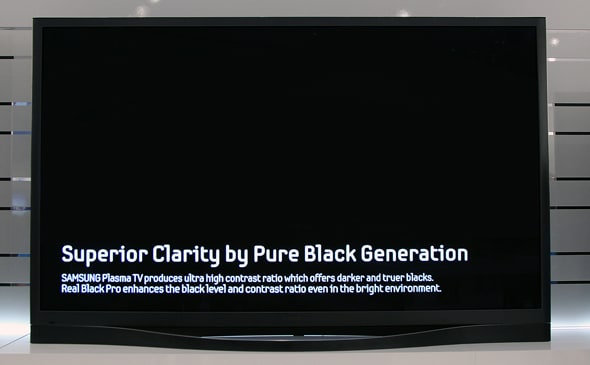
Right
{{section_header}}{{section.name}}{{/section_header}}
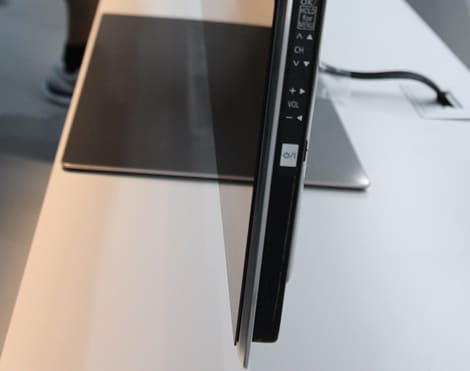
Back
{{section_header}}{{section.name}}{{/section_header}}
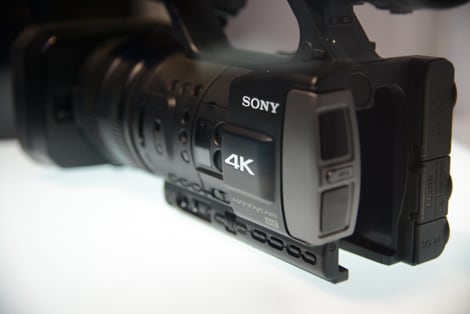
Left
{{section_header}}{{section.name}}{{/section_header}}
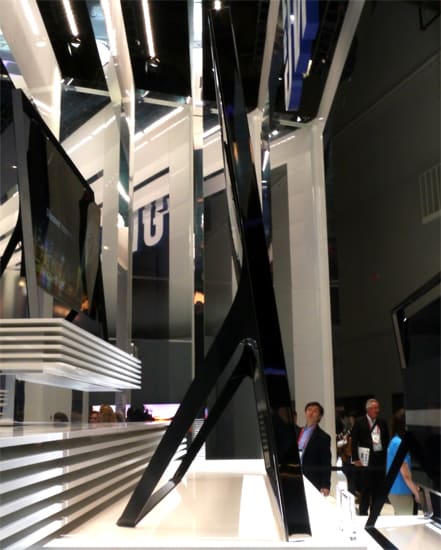
Top
{{section_header}}{{section.name}}{{/section_header}}

Bottom
{{section_header}}{{section.name}}{{/section_header}}
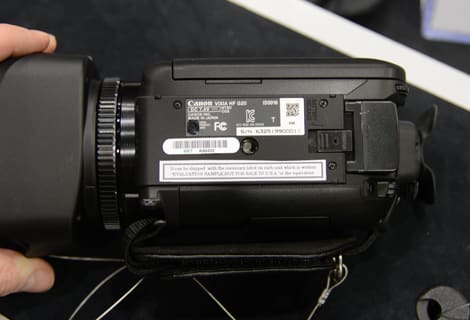
Compression
{{section_header}}{{section.name}}{{/section_header}}
The Sony Handycam HDR-PJ760V uses AVCHD compression to capture HD video. The camcorder's progressive record modes (24p and 60p) use the new AVCHD 2.0 specifications, which is also commonly called AVCHD Progressive (for obvious reasons). AVCHD video looks great, especially when played back on an HDTV, but it also comes with the standard caveat: AVCHD video clips are extremely power-hungry, which makes them difficult to work with on editing systems.
Read more about the advantages and disadvantages of different compression types.
The new AVCHD 2.0 format has some even worse problems, and we've found many editing programs simply crash when we've tried to import any 60p clips shot that are compressed using AVCHD 2.0. Hopefully, as AVCHD 2.0 becomes more popular, updates will be made to accommodate this format more readily.
The PJ760V appears to have the same recording options as last year's PJ30V. There are four quality options for recording 1080/60i video, topping out with a 24Mbps recording bitrate, and there is one option for recording 1080/60p video. You can also record 24p video (with two quality options), and there's a standard definition record mode as well.
Media
{{section_header}}{{section.name}}{{/section_header}}
One of the biggest upgrades to Sony's line of projector camcorders comes in the form of additional internal memory. The PJ760V features a whopping 96GB of internal flash memory in addition to a memory card slot—that's a 3x upgrade over last year's HDR-PJ30V, which had only 32GB of internal memory. 96GB is a ton of flash memory for a camcorder to have, and since flash memory isn't bulky or heavy like an internal hard drive, the PJ760V is still able to retain a relatively compact design.
Read more about the advantages and disadvantages of different media types.

Auto Mode
{{section_header}}{{section.name}}{{/section_header}}
It was difficult for us to get a good feel for how well the auto controls on the PJ760V actually performed while we were on the show floor at CES, but we were impressed by the plethora of automatic options on the camcorder. Sony claims the new model has 120 different scene mode combinations that can be selected automatically when the camcorder is in its dedicated iAuto mode. Additionally, the camcorder offers "advanced" auto controls like spot meter, spot focus, auto exposure shift, auto white balance shift, a low lux mode, and auto back light. Most of these features were found on the PJ30V last year, so it's really the inclusion of the manual control options (see below) that sets the PJ760V apart.

Low Light Modes
Sony's low lux mode, which is included on all of the company's Handycams, boosts gain and allows the camcorder to use a 1/30 of a second shutter speed in low light situations. It will give you a brighter image in low light, but you'll also see more noise and a choppier image (because of the slow shutter). You can also use the camcorder's built-in video light to give a boost in dimly-lit environments.
If you're shooting in total darkness, the HDR-PJ760V includes Sony's infrared NightShot feature. Using this mode will give your images a bright, neon-green glow (like night vision goggles), but it will enable you to record in a space with little or no illumination. NightShot can be a huge drain on battery life, though, so be aware of that fact if you're using it regularly.
Zoom
Focus
{{section_header}}{{section.name}}{{/section_header}}
Manual controls on the HDR-PJ760V got a huge upgrade compared to the offerings on last year's PJ30V from Sony. The new camcorder includes manual control options for focus, aperture, shutter speed, white balance, and exposure controls, all of which can be adjusted using a front-mounted control dial—the same dial that Sony has included on its flagship models in the past.
The dial works best for adjusting focus, as we found the loose resistance of the dial wasn't best for making adjustments where you had to select a specific value (like aperture and shutter speed).
Aperture
{{section_header}}{{section.name}}{{/section_header}}
Like focus, the aperture settings can be adjusted using the control dial or by pressing buttons on the LCD. The manual aperture range is f/1.8 to f/9.6. In case you're confused, Sony calls the aperture adjustment IRIS (yes, with all caps) in the menu and on the control dial menu.
Shutter Speed
{{section_header}}{{section.name}}{{/section_header}}
Shutter speed is another useful control that can be set with the dial or touchscreen on the PJ760V. The range for manual adjustment is excellent, with the camcorder offering shutter speeds from 1/8 to 1/10000. Sometimes we found using the dial was a bit difficult if there was a specific shutter speed we were trying to select, but since you probably won't change shutter speeds all that often, we didn't mind this awkward handling too much.
White Balance
{{section_header}}{{section.name}}{{/section_header}}
The camcorder has two white balance presets—outdoor and indoor—as well as a manual setting and an auto mode. If you want to tilt the color temperature in one direction or another, the HDR-PJ760V also has a white balance shift option (that can be controlled with the dial).
Gain
{{section_header}}{{section.name}}{{/section_header}}
New feature alert! The Sony HDR-PJ760V has an AGC limit function that essentially allows you to control the gain levels used by the camcorder (although not completely). With this feature, you set a gain limit for the camcorder to use, so when this limit is set the camcorder won't boost the gain any far than that limit. The limit options include 24dB, 21dB, 18dB, 15dB, 12dB, 9dB, 6dB, 3dB, and 0dB. Canon has a nearly identical feature on a number of its Vixia camcorders, so it's about time Sony included this option on a Handycam.
Color & Image Controls
{{section_header}}{{section.name}}{{/section_header}}
In addition to the manual controls listed above, the PJ760V is outfitted with prosumer features like CinemaTone presets, a 24p recording option, optical image stabilization (SteadyShot), zebra patterns, and focus assistance (including peaking). We've seen most of these features before on Sony's flagship models from previous years, but this is the first time Sony has included these options on a projector camcorder. We like this business plan, as it gives consumers more high-end and "flagship" models from which to choose from (the non-projector HDR-CX760V also has these manual control features).
Ease of Use
{{section_header}}{{section.name}}{{/section_header}}
Sony didn't change much with the menus or button layout on the PJ760V, so the camcorder shouldn't be all that much different to use than last year's PJ30V (which was decent for beginners). The addition of the control dial, however, does make the camcorder better for pros who want to adjust controls on the fly. The dial isn't perfect, let's be clear about that, but it is a lot better than the touchscreen for adjusting focus especially.
Handling
{{section_header}}{{section.name}}{{/section_header}}
In our limited time with the HDR-PJ760V at CES, we found the camcorder to be reasonably comfortable, with a good hand strap, but a few minor handling issues. The right side felt rigid in our palm, and we yearned for a more ergonomic shape that would fit better in our hands. We also noticed our pinky coming awfully close to the built-in mic on the top of the camcorder when we gripped it in our hand. This leaves us wondering why Sony decided to move the mic to the roof rather than keep it on the front like last year's PJ30V. Maybe the new control dial has something to do with this decision (due to its front-mounted placement).
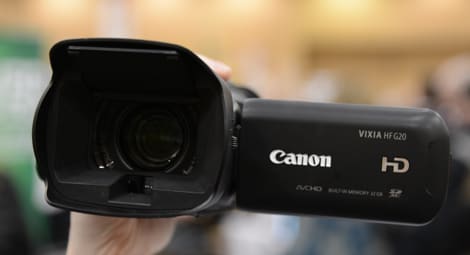
Other than those issues, the HDR-PJ760V handled adequately for a consumer camcorder. It's not an incredibly light model, but for a camcorder that packs in a 3-inch LCD, a viewfinder, and a control dial, it's fairly compact. As we've said before, we like the addition of the control dial—especially for adjusting focus—but this isn't the best dial or lens ring we've ever seen, and we're more fond of rings on the flagship models from Canon and Panasonic overall.


Battery
{{section_header}}{{section.name}}{{/section_header}}
The battery compartment on the HDR-PJ760V is open-ended, which means you can use larger battery packs with the camcorder if you so choose. Sony claims of an improvement in battery life with this model, so that's something we'll definitely pay close attention to when we get this camcorder into our labs.

LCD & Viewfinder
{{section_header}}{{section.name}}{{/section_header}}
The HDR-PJ760V features a 3-inch, 921,000-pixel LCD touchscreen, which is an excellent resolution for a camcorder screen. The size of the screen isn't any larger than what Sony offered on last year's projector cams, but the resolution represents a dramatic increase from 230,000 pixels to 921,000 pixels.

A new addition on the PJ760V is a small viewfinder, which is something that Sony did not include on last year's HDR-PJ30V. Also cool is the fact that the viewfinder both extends and pivots to give you more flexibility when recording.


Playback
{{section_header}}{{section.name}}{{/section_header}}
Playback functions on camcorders aren't usually something we spend too much writing about, but with the HDR-PJ760V's built-in video projector system, the playback options are one of the model's most interesting features. If you read our review of last year's HDR-PJ30V, you should already be familiar with the inner workings of Sony's projector-camcorders. While we liked the idea behind the built-in projectors, we found the quality of the projectors to be rather poor overall. Still, it's a cool feature and it does help if you don't have access to an HDTV to watch your video clips on the big screen. According to Sony, the PJ760V can project an image up to 100 inches diagonally using the tiny projector on the backside of the LCD panel.
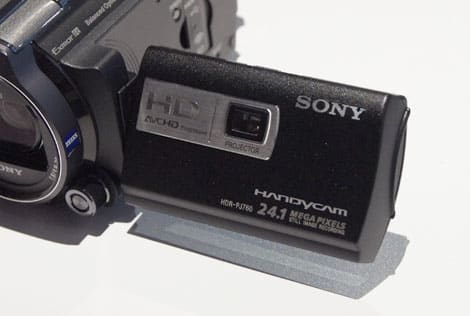
The built-in projector is a cool feature, despite its limited usefulness.
Menus
Audio Features
{{section_header}}{{section.name}}{{/section_header}}
Sony lists a lot of high-tech sounding audio features for the PJ760V, but the only ones that really matter are the camcorder's built-in 5.1-channel microphone and the 3.5mm external mic jack. There's also a noise reduction feature, audio level display, and an automatic zoom mic that uses face detection to focus the audio recording on people who are talking.
The new microphone placement on the top of the PJ760V bothered us, as we found our (admittedly large) fingers came very close to covering up portions of the microphone when we gripped the camcorder. This is not good, and no amount of fancy-sounding microphone specs are going to be able to handle a mic that is covered, rubbed, or bumped by wandering fingertips.

Connectivity
Still Features
Other Features
{{section_header}}{{section.name}}{{/section_header}}
Video Projector
The HDR-PJ760V's built-in video projector is probably the single most interesting feature on the camcorder, and it's certainly the most unique. Sony is the only major camcorder manufacturer that is offering a feature like this, and, while the feature is not an essential one, it is surely one that can be fun to play with. In addition to the PJ760V, Sony has announced four additional camcorders with built-in projectors at CES. The PJ760V is the flagship model, followed by the HDR-PJ710V, HDR-PJ580V, HDR-PJ260V, and HDR-PJ200. You can read our news piece about all five projector camcorders here.
Golf Shot
Yup, that fun feature that lets you analyze your golf swing by taking a series of still images is back on the HDR-PJ760V. Sony has had this feature for a few years now, so it's kinda lost its luster (for us, at least)
Smooth Slow Record
This mode lets you shoot with a high frame rate on the PJ760V, which then makes the video play back at very slow motion. Like Golf Shot, this feature has been a staple on Sony Handycams for a few years now.
Conclusion
The Handycam HDR-PJ760V is essentially a combination of two previous Sony camcorders: the HDR-PJ30V and the HDR-CX700V. Sony took the built-in projector from the PJ30V and strapped it onto the body of the CX700V, which had all the controls and features one would expect from a flagship Sony camcorder. The result means the HDR-PJ760V is a top-line camcorder with professional features and plenty of manual controls—and a built-in video projector.
We do like the idea of a built-in projector on a camcorder, and we think the feature is something that consumers will enjoy to play around with, but we can't see anyone purchasing the HDR-PJ760V just because of the projector. The feature is simply not enough of a selling point to make that happen. That's why were' so pleased to see Sony outfit the PJ760V with plenty of other intriguing features, controls, and functions.
We're excited to get the PJ760V into our labs for two main reasons: we want to see how much better the camcorder will perform in our performance tests (especially stabilization and low light), and we also want to take a look at the projector to see if it is improved over last year's models. The HDR-PJ30V was already a pretty good camcorder, so if the PJ760V shows signs of improvement, then this new model from Sony may end up being one of the better camcorders we review in 2012.
Photo Gallery
{{photo_gallery "FI Lens Image", "FI Front Image", "FI Right Image", "FI Back Image", "FI Left Image", "FI Left Open Image", "FI Top Image", "FI Bottom Image", "FI Media Image", "FI Easy Mode Image", "FI Zoom Image", "FI Zoom Image 2", "FI 3D Lens Image", "FI 3D Lens Image 2", "FI 3D Physical Controls", "FI 3D Physical Controls 2", "FI Handling Image", "FI Handling Image 2", "FI Handling Image 3", "FI Battery Image", "FI LCD Image", "FI Viewfinder Image", "FI Viewfinder Image 2", "FI Playback Image", "FI Mic Image", "FI Flash Image", "FI Photo Mode Image", "FI Ports Image 1", "FI Ports Image 2", "FI Ports Image 3", "FI Ports Image 4", "FI Ports Image 5", "FI Ports Image 6"}}
Specs
{{manufacturer_specs_table}}
Meet the tester
Jeremy is the video expert of our imaging team and Reviewed.com's head of video production. Originally from Pennsylvania and upstate NY, he graduated from Bard college with a degree in film and electronic media. He has been living and working in New England since 2005.
Checking our work.
Our team is here to help you buy the best stuff and love what you own. Our writers, editors, and experts obsess over the products we cover to make sure you're confident and satisfied. Have a different opinion about something we recommend? Email us and we'll compare notes.
Shoot us an email